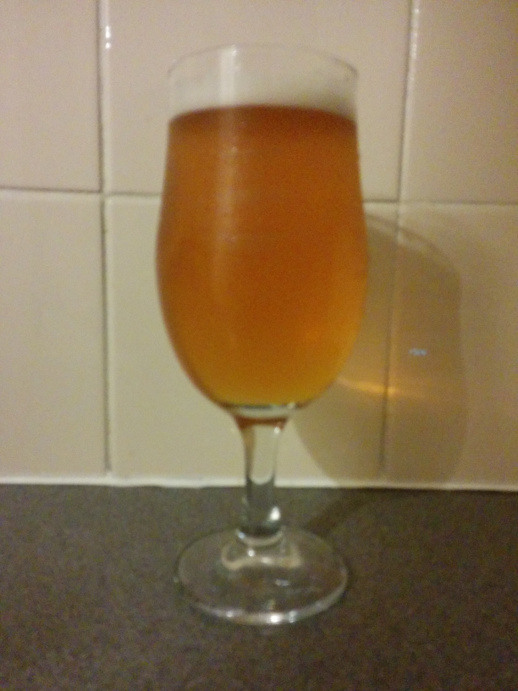By Ben McCormick
2: Here come the Belgians
While spring spurs the creative spirit in homebrewers as it does in almost everything else, the summer months are the cruelest. Once the mercury – or whatever it is they have in thermometers these days – rises above the comfortable early twenties, it’s almost as if there is a reverse hibernation effect that sees domestic beer makers down tools and drink the fruits of their labours instead. A state of torpor sets in, during which the heat has rendered the brewer inert. Some of us not-even-secretly hope for the kind of wet British summer that has headline writers and meteorologists lurching for the cliché and the record books. Not for we the welcoming of the warmer weather.
For the most part, yeast, it seems, doesn’t much care for heat either. And without functioning yeast, the brewer is only making the kind of glorified Horlicks that would have Heath Robinson nodding in approval. In cooler climes, yeast joyously goes about its business of eating sugars and excreting alcohol. But like office workers denied the luxury of air conditioning, once the temperature goes above a certain level, lethargy creeps in. Heatwaves can kill and yeast is generally first to succumb. You can shock the sensitive little cells to death by adding yeast to wort that’s too warm and, by fermenting at too high a temperature, you can produce more alcohol than you’re aiming for and off or overly fruity flavours in your beer. In fact, unless you’ve got a fermenting fridge, you may as well assume the politician’s take on summer and spend more time with the family.
There are ways around this, of course. You can place your fermenting bucket in a builder’s trug full of water and control the temperature as best you can using an aquarium heater. Or you can build your very own ‘swamp cooler’, an ingenious if somewhat long-winded and makeshift way of keeping things cool using a large bucket, a towel and a few ice-packs. But if that all sounds too much like hard work – and after everything else involved in the brewing process, it did to me – you can opt to brew something with a yeast that likes it hot.
Step forward Saison. A beer that was traditionally made in winter and spring for slaking the thirsts of seasonal Walloon harvest workers (saisionniers, hence the name), it’s now one you can brew in summer too. Based on a relatively simple recipe, this pale farmhouse ale is characterised by complex peppery, spicy or citrus flavours (or sometimes all three) and often a scent of banana or pineapple.
When I drink it, in my mind’s eye I’m transported back a couple of hundred years to a simpler time, finishing off an honest day’s toil in the southern Belgian cornfields with my fellow workers outside a crumbling yet functional barn. As we refresh our parched palates, we reflect on a job well done and discuss the tasks ahead, laughing and engaging in mild ribaldry as the evening gathers around us. I’ll add I’ve never worked on a farm in my life, so have no reference point for this romantic idyll of agricultural labour. The nearest I ever got to it was a week’s grape-picking in the south of France, so long ago that the passed time has completely erased all the muscle memory and fossil remains of what was probably incredibly hard effort. All I have left is the fading glow of camaraderie, images of dusky vineyards swaddled in late September setting Vaucluse sun and a few choice French swearwords gleaned in the fields.
But back to the beer. While malt and hops obviously have a bearing on how a saison will taste, they’re mainly there to provide the framework for the yeasts to express themselves. You can use several strains to ferment the beer and these are hardier than most. They don’t mind it getting hotter. In fact, their appetite for sugars in the wort seems to grow the warmer it gets. Which was perfect last summer, when late June and early July produced the kind of temperatures that would have most yeasts give in meekly and the weather reporters lurching for their reference books again.
What I hadn’t realised when putting last summer’s saison together was just how long it would take and how little sleep I’d get. Having already brewed the pale ale for Port Eliot, which was then fermenting under the stairs, I placed the newly brewed beer in my bedroom. That warm night, and for the next few weeks in cloying bedtime heat, I was either prevented from sleeping or woken up by the airlock’s bubbling herald of the voracious yeast’s ongoing feast. I’d planned taking some to the festival, but the yeast had other ideas – it hadn’t finished eating, thank you very much. That said, the beer itself was terrifically easy to make, needed no elaborate heat control system and tasted sublime by the time it was ready.
My only regret was not having any left to offer the saisonniers come harvest time, the entire batch being but a soft, golden, lingering memory by early September. Batch two was dispatched in even less time. It’s unlikely to be too long before batch three gets under way.
Previous Words on wort
